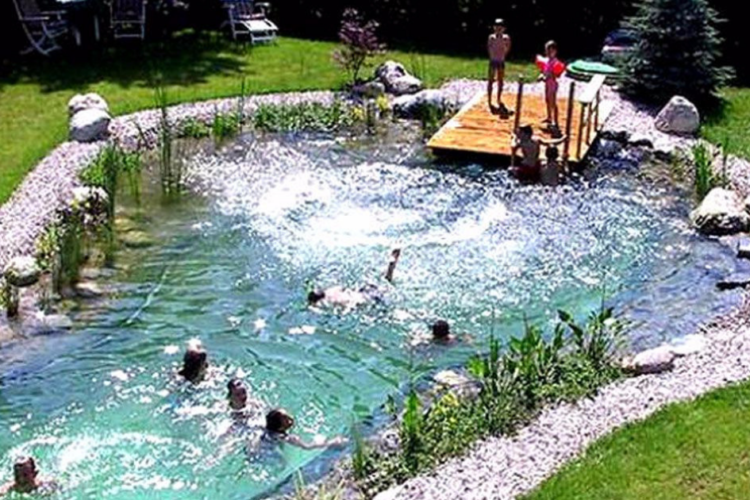Swimming pools are a great way to spend time with your family or friends in the hot summer months. But, if you’re not careful they can also be very expensive and take up a lot of space in your backyard. Luckily, there’s an alternative-a natural swimming pool.
A natural swimming pool is just what it sounds like. A pond surrounded by rocks that people swim in. They’re surprisingly easy to build and maintain which makes them perfect for you if you want to save money on construction costs and enjoy their outdoor space at the same time. Natural pool treatment is also affordable and easy to perform.
This article explains how to build your very own natural swimming pool.
- Have A Realistic Plan
Building a natural pool involves a lot of work. Because of that, you should make your plans as realistic as possible, and plan for the worst-case scenario so you don’t find yourself short on funds or time when you’re almost completing the project.
For example, if it’s summertime, it may be best to use solar panels and circulating pumps with filters to heat up water water since electricity can get expensive at that point in the year.
This might sound like an overkill, but it could save you from running into some problems down the line when your original plan doesn’t work out because of unforeseen circumstances.
- Let It Be Natural And Simple
It’s best to keep things as simple and natural as possible. This means using the least amount of chemicals or additives that you can, without compromising your pool water quality. For instance, if a chemical is only needed once every three months for normal maintenance, then it should be used sparingly so there isn’t an unnecessary build-up in the system over time.
Although organic acids are safe enough for skin contact, they’ll needlessly wear down some metals like titanium which may lead to corrosion issues with pumps and fittings overtime.
Also, select a simple shape and size for the pool. Oval or Rectangular shapes are more traditional, but kidney and figure eight pools are becoming increasingly popular as they offer a variety of uses, such as lap swimming and playing games like water volleyball.
The pool’s size will depend on your needs. A larger pool can accommodate multiple swimmers at once, while smaller ones might be better suited to children’s play time in the backyard. If you want to use the natural swimming pool year round, make sure it is deep enough so that there is no ice along the edges during winter months. You’ll also need to install a heater if this is important to you (and bear in mind that heated pools require electricity).
- Zone Right
Before commencing the building exercise, you should get your zoning right. That means finding the right place for the pool, and getting a document from the city that says what you’re doing with this pool is allowed in your area. Odds are good if there’s been a similar construction nearby.
The Bottom Line
A natural swimming pool can offer an eco-friendly, affordable and sustainable way to enjoy your backyard. The best thing about them is that they don’t need chemicals and are easy to build.


